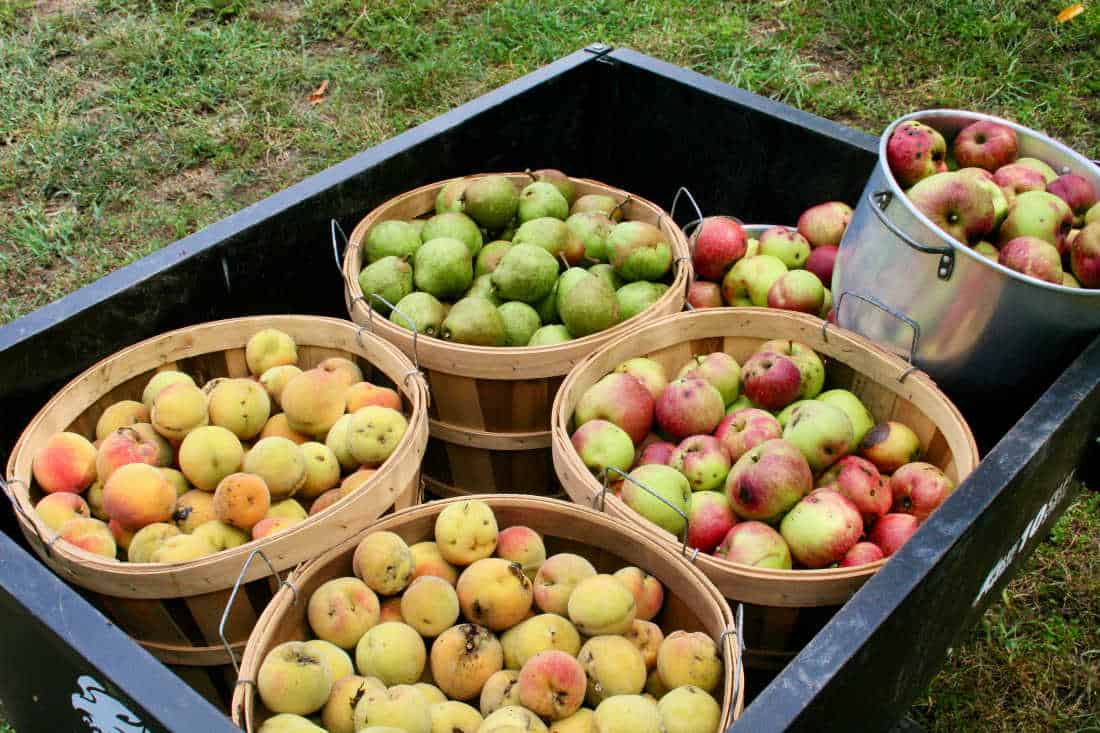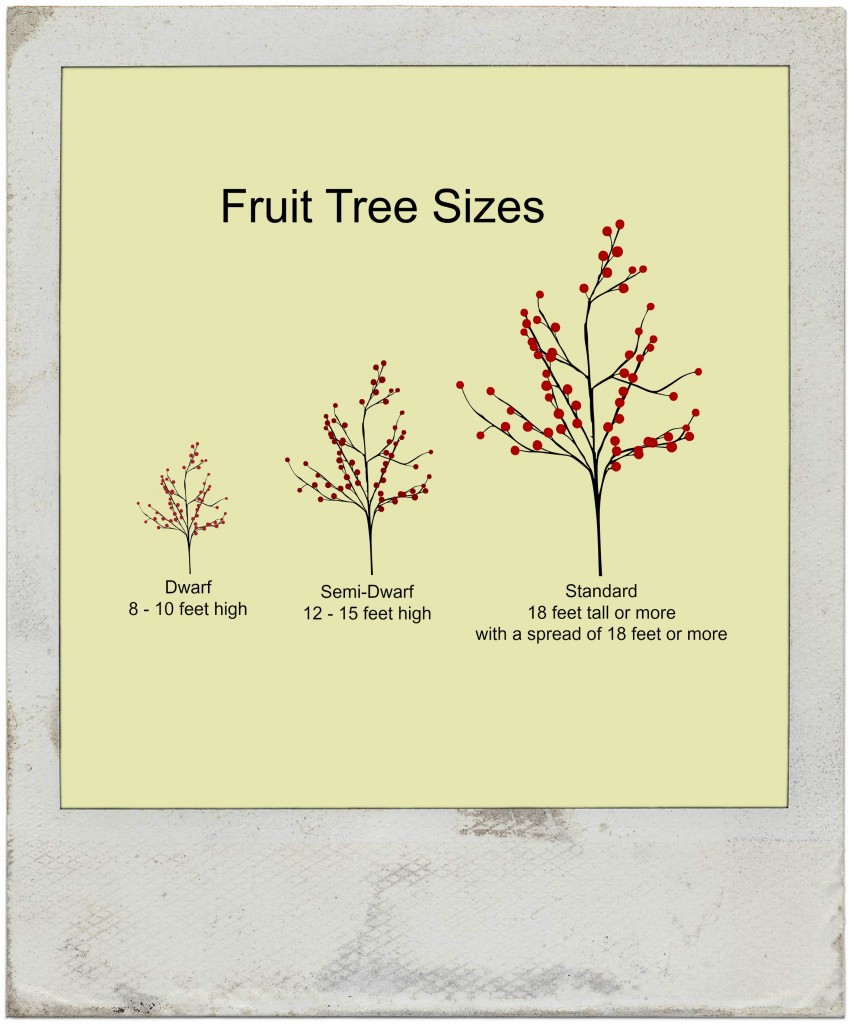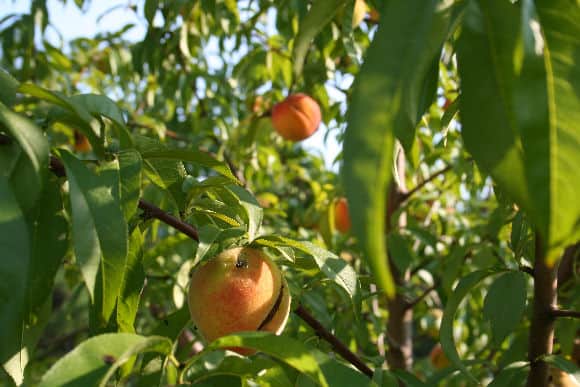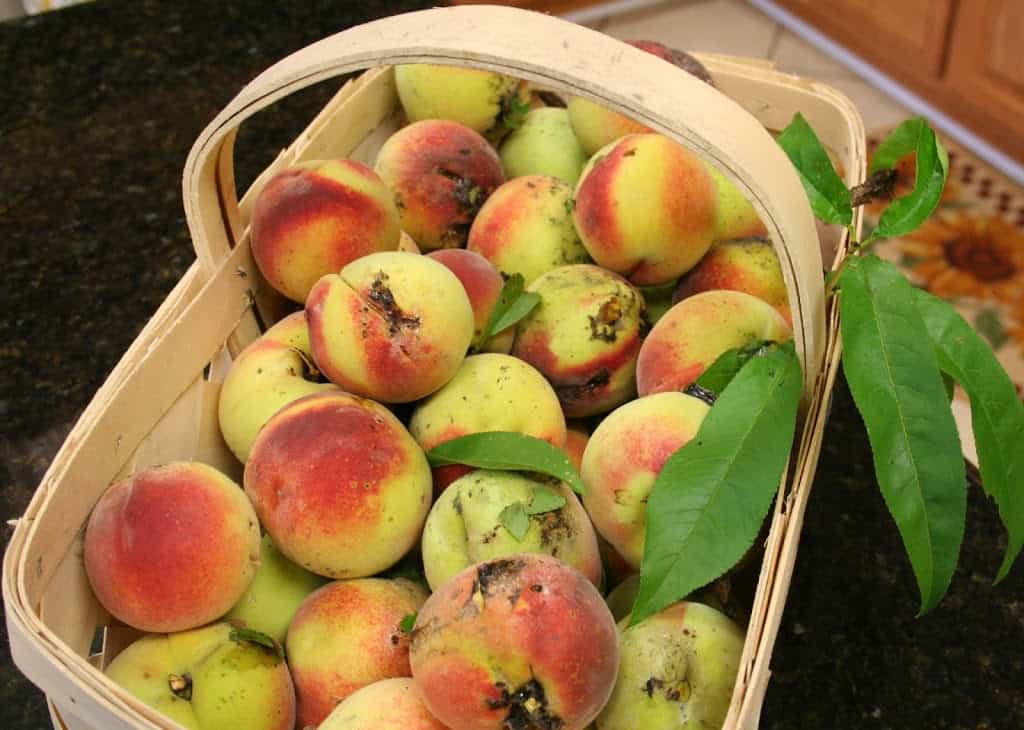What does “dwarf fruit tree” mean? What do the terms semi-dwarf and standard mean? I’ll explain what these terms mean and how they change how you grow fruit in your backyard.
What Is a “Dwarf Fruit Tree”?
A dwarf fruit tree is a tree that bears full-sized fruit but the tree itself needs only a little space to grow. Unlike a standard fruit tree which may attain heights of 20, 30 or more feet, and a crown that spreads 10-20 feet or more wide, dwarf fruit trees remain about 10-15 feet tall. That means you can grow a dwarf fruit tree in a suburban backyard or in a pot or container on a city balcony or deck.
Why Are Dwarf Trees Small?
Dwarf fruit trees are grafted onto standard tree rootstock. Grafting the process by which stems of the same species of trees are cut and joined together until they heal and create one circulatory system, effectively growing into one single tree.
Many fruit trees are created by grafting. Grafting usually helps a less sturdy variety survive better by merging it with a hardy root system. If you purchase a ‘fruit cocktail’ tree sold in catalogs, it’s a grafted tree. Multiple species of fruit – apples, pears, peaches, plums – are grafted onto a single sturdy rootstock to provide variety on one tree.
The adult size of a dwarf fruit tree may vary. The size is determined by the scion, or the top portion of the graft, and the rootstock, or the bottom portion which contains the root system of the tree. The combination of the two will give your tree its final height.
Is the Fruit Different on a Dwarf Fruit Tree?
Dwarf fruit trees produce standard-sized fruit. If you pick a peach from a dwarf peach tree and one from a standard peach tree and place them side-by-side, they look very similar except for varietal differences. The taste is also the same.
Dwarf Fruit Trees for the Home Garden
One thing you need to know about growing dwarf fruit trees: they should have a permanent stake or support. The place on the trunk where the scion was grafted to the rootstock can be weak or weaken over time. Apple trees that snap in a strong wind usually break at the grafting site.
Dwarf fruit trees can be planted only about 10 feet apart, making them perfect for the home garden. Keep in mind that apples and many other fruit trees need a different variety in order to set fruit or pollinate. The flowers of both trees must bloom around the same time, or within days of each other, so that bees visiting one tree can carry pollen to the other and vice versa.
To pick the best dwarf fruit tree varieties for your garden, you’ll need to look for information locally. I can give you recommendations, but my varieties will differ from those in other growing zones. Some fruit trees like cold weather, others prefer hot. You need to know what will grow in your part of the country.
A great place to start your variety search is on your local Cooperative Extension website. You can find your local office using the map on the USDA website.
The Orchard at My Farm, Seven Oaks
We planted our orchard in 2007 and are always adding new trees. We have approximately 10 apple trees, 10 peach trees, 4 pear trees, 2 nectarines, 3 fig trees, and apricot, plum, and cherry trees. To date, the peach, apple, and pear trees have produced the most fruit, with the apples leading in fruit production.
All of our trees are standard size except several new peach and nectarine trees we added last year. We switched to dwarf fruit trees to make pruning and harvesting easier. While we do have tall ladders and equipment to help with both activities, it’s so much easier to prune and pick fruit with dwarf trees!
More Information on Growing Fruit in Your Backyard
I hope you’re enjoying my series on growing fruit in your backyard. It’s fun to share what I have learned about growing fruit trees over the past eight years with you. More to come, but if you’re just getting caught up on the series, here are additional articles that may be of interest to you:
- How to Grow Fruit in Your Backyard
- What Fruit Trees Can I Plant?
- Where to Plant Fruit Trees
- Growing Fruit Trees in Containers
Happy growing!









[…] dwarf apple tree, a peach tree, or a pear tree doesn’t take up much space and provides shade during the summer […]